5901 Botham Jean Blvd, Dallas, TX 75215
The Importance of Recycling Titanium and Superalloys from Aircraft Engines
July 31, 2025The aerospace industry faces a critical challenge: the finite nature of metal resources versus rising demand for specialized materials. Recycling titanium and superalloys from aircraft engines has become essential to address these challenges.
Aircraft engines are rich in high-performance metals, containing titanium alloys and superalloys that retain their properties under extreme conditions. The exceptional strength-to-weight ratio and corrosion resistance of titanium make it indispensable in modern aviation. Similarly, nickel-based superalloys withstand the intense heat of jet engines, often functioning at temperatures exceeding 1,300°C without losing structural integrity.
The economic case for recycling these materials is compelling. Producing virgin titanium through the Kroll process is both expensive and energy-intensive. Studies indicate that recycling titanium can save up to 95% of the energy required for primary production. In the aerospace industry, where titanium constitutes a significant portion of aircraft weight, these cost benefits are particularly significant. Recycling titanium from manufacturing byproducts or decommissioned aircraft provides a cost-effective alternative to relying solely on virgin materials for new aircraft construction.
How Are Aircraft Engines Collected and Prepared for Titanium and Superalloy Recycling?
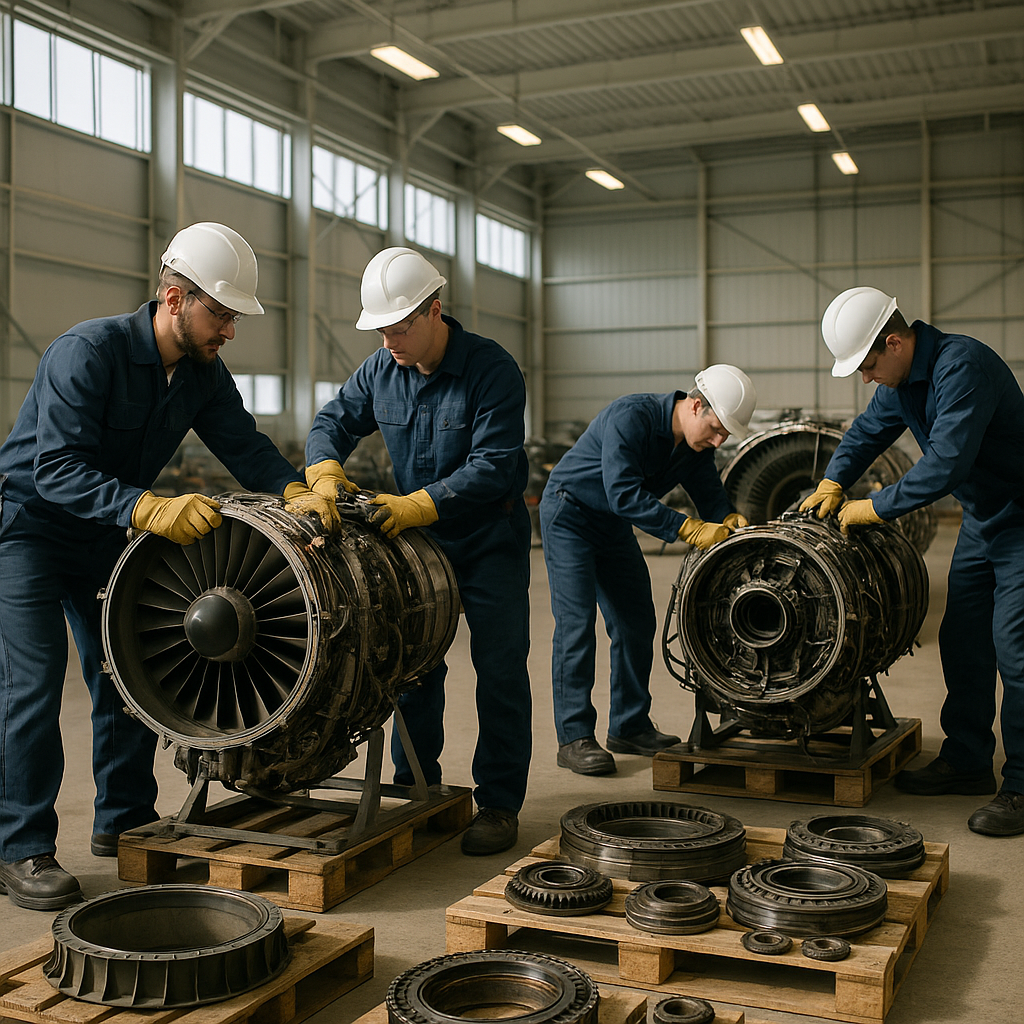
The journey of titanium and superalloys from aircraft engines to the recycling stream begins long before they enter a melting furnace. Once an aircraft reaches the end of its service life or is retired due to upgrades, engines are carefully removed by specialized crews at decommissioning facilities. Each engine undergoes a thorough inspection and documentation process to verify its history, model, and alloy composition. This step is critical because traceability and alloy identification directly impact the potential value and use of the recycled material.
After removal, engines are transported to certified recycling centers equipped to handle aerospace-grade materials. Dismantling is meticulous: external components, wiring, and electronics are first stripped away. Technicians then separate the main structural elements—fan blades, compressor discs, turbine blades, and casings—all of which contain significant amounts of titanium and nickel-based superalloys.
Sorting and pre-processing are crucial for maximizing the quality of recycled material. Components are sorted by alloy type using advanced analytical tools such as X-ray fluorescence (XRF) analyzers and spectrometers. Any parts containing hazardous substances, like lubricants, seals, or coatings, are cleaned and decontaminated following strict environmental regulations. Proper cleaning and segregation ensure that only high-purity scrap enters the recycling process, essential for meeting stringent aerospace standards.
This careful preparation not only optimizes material recovery but also protects the integrity of the recycling stream, laying the foundation for closed-loop resource management in the aerospace sector.
Innovations Shaping the Future of Titanium and Superalloy Recycling
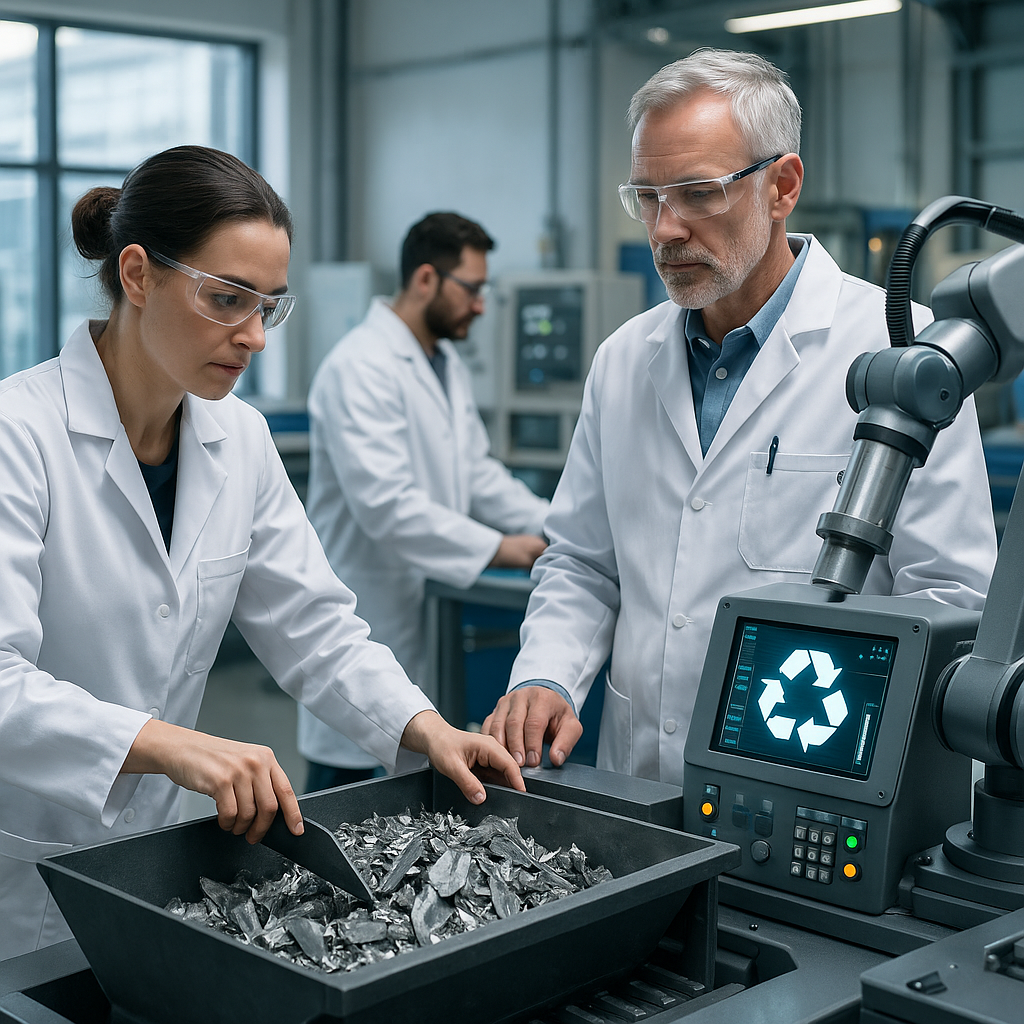
As the demand for titanium and superalloys rises in aerospace and related industries, innovation is transforming how these materials are recovered and reused. Leading-edge technologies are emerging to overcome historical barriers of purity, efficiency, and cost.
Advanced Sorting and Traceability
Digital tracking and smart sorting systems now employ machine learning and data analytics to identify alloy grades with remarkable accuracy. Blockchain technology is being tested to enhance traceability, offering end-to-end certification of recycled materials from original engine to new component. This transparency builds confidence among manufacturers, regulators, and customers alike.
Refining and Purification Breakthroughs
New refining techniques—such as plasma arc melting, electron beam melting, and vacuum induction refining—allow recyclers to reduce contamination and achieve the high purity needed for aerospace applications. Some facilities now operate fully automated, closed-loop systems that recover, purify, and return titanium scrap to manufacturers with minimal waste or emissions.
Design for Recycling and Industry Collaboration
Engine manufacturers increasingly embrace “design for recycling” principles, using modular assemblies and standardized alloy families to simplify end-of-life disassembly and sorting. Industry collaborations, such as the Sustainable Titanium Initiative and partnerships with specialized recyclers, are accelerating the adoption of greener practices across the supply chain.
These innovations are not only driving efficiency and quality but also reducing costs and environmental impacts, helping the aerospace industry move closer to its sustainability and circular economy goals.
What are the economic advantages of recycling titanium and superalloys?
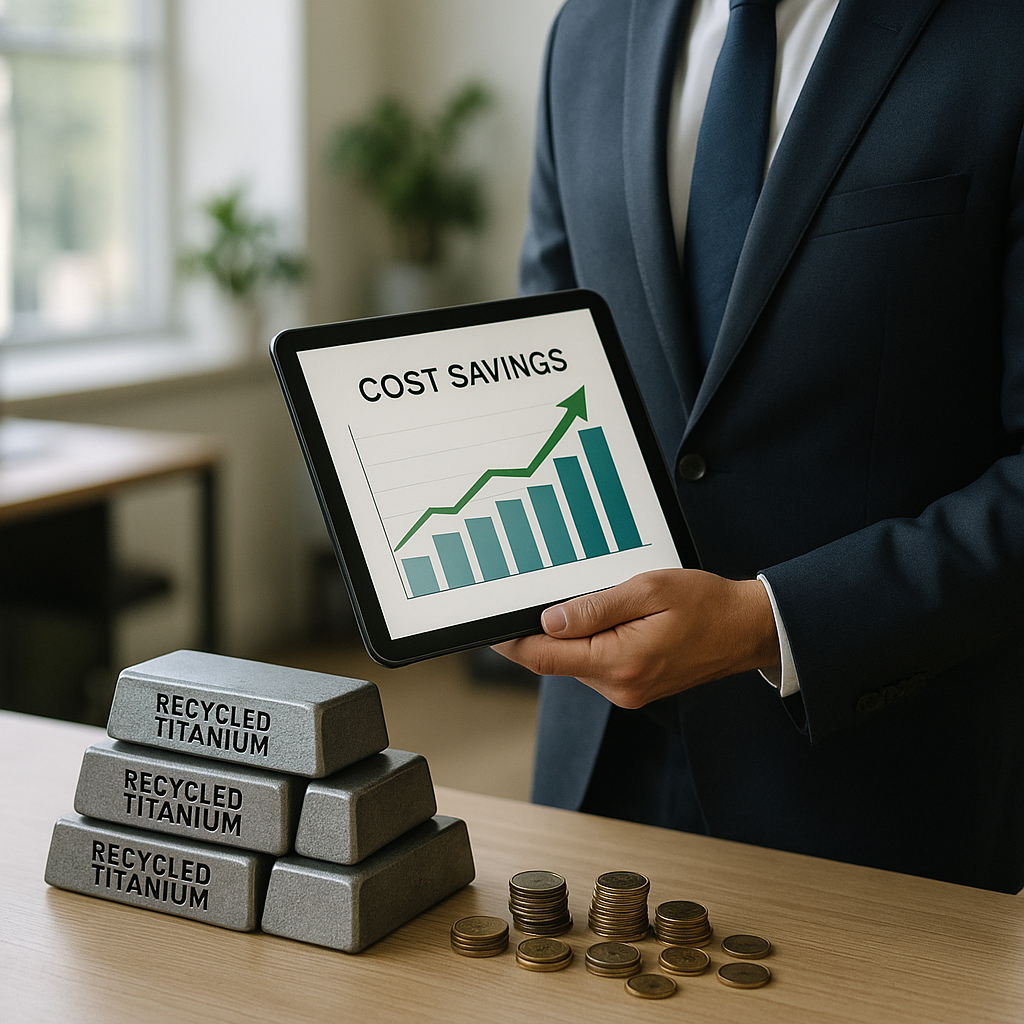
Recycling titanium and superalloys offers substantial financial benefits for aerospace manufacturers. The primary advantage is energy savings. Recycling these materials requires up to 95% less energy than extracting and processing virgin titanium from ore, leading to significantly lower production costs.
Manufacturing new titanium using the Kroll process is both expensive and energy-intensive. In contrast, recycling operations can process titanium scrap at a much lower cost. These savings allow aerospace companies to maintain competitive pricing while preserving their profit margins, given that material costs constitute a significant portion of overall expenses.
Companies incorporating recycled titanium into their manufacturing processes gain a competitive edge. Reduced material costs enable them to offer competitively priced products or reinvest savings into research and development. This advantage is crucial as the aerospace industry faces pressure to reduce environmental impact while maintaining economic viability.
The increasing value of titanium scrap creates new revenue opportunities. Businesses generating titanium scrap from manufacturing processes can establish additional revenue streams by selling this valuable material to specialized recyclers. What was once considered waste now becomes a valuable commodity in the circular economy.
Recycling also offers protection against supply chain vulnerabilities. High-quality titanium ore is located in specific regions, creating potential supply risks and price volatility. By developing robust recycling programs, aerospace manufacturers can reduce their dependency on these limited resources, gaining greater stability in material costs.
Beyond direct financial savings, recycling titanium and superalloys helps aerospace companies comply with increasingly stringent environmental regulations. This compliance prevents potential fines and penalties and strengthens relationships with environmentally conscious customers and investors, creating long-term economic value.
How does recycling titanium and superalloys benefit the environment?
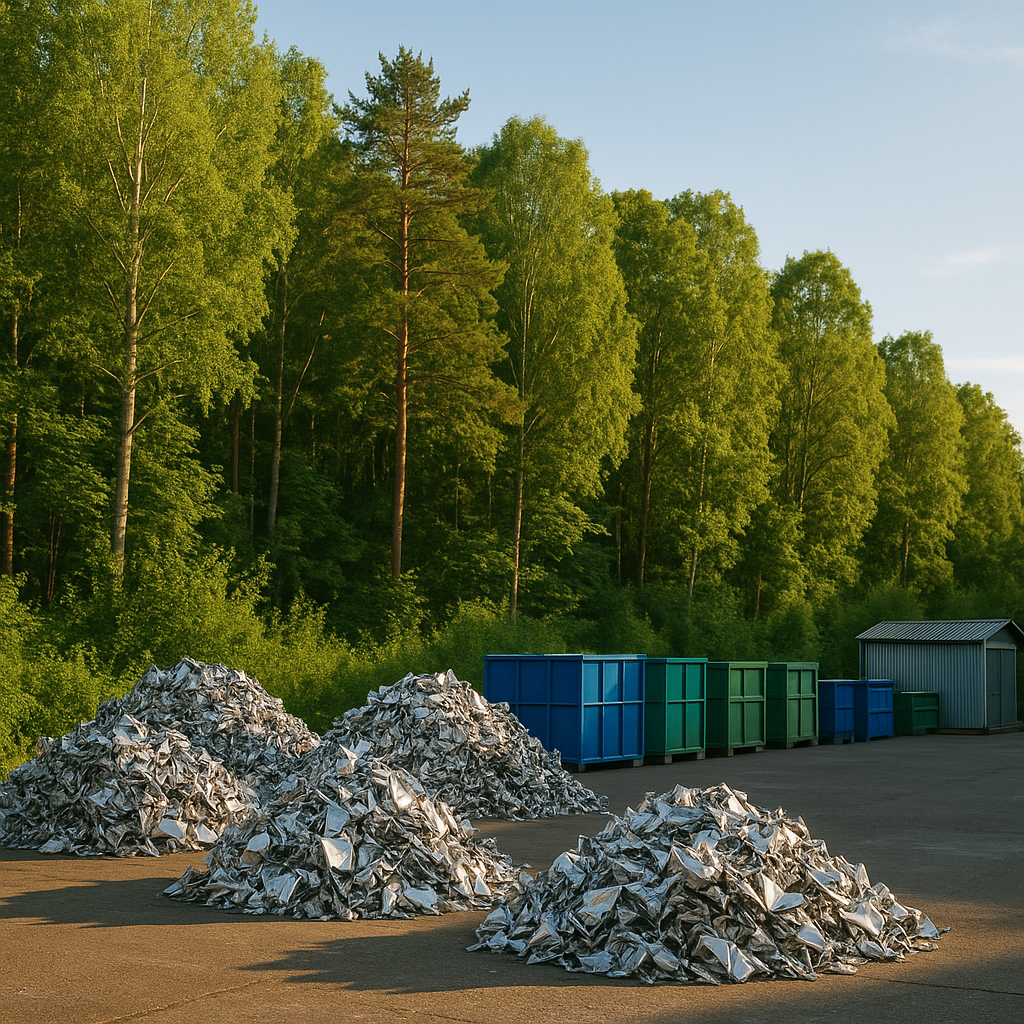
Recycling titanium and superalloys from aircraft engines provides substantial environmental benefits compared to primary production methods. The extraction and processing of titanium ore cause significant environmental impacts, such as habitat disruption, soil erosion, water pollution, and considerable carbon emissions. In contrast, recycling these valuable aerospace materials greatly reduces these harmful effects.
The energy savings from titanium recycling are particularly noteworthy. Studies indicate that recycling titanium uses up to 95% less energy than primary production. This significant reduction in energy consumption directly translates to fewer greenhouse gas emissions. For every ton of titanium recycled, a substantial amount of carbon dioxide emissions is prevented from entering the atmosphere, contributing meaningfully to climate change mitigation efforts.
Water conservation is another critical environmental benefit. Primary titanium production is water-intensive, requiring large quantities throughout the extraction and refining processes. Recycling significantly reduces water consumption, aiding in the preservation of this essential resource. This aspect of resource conservation becomes increasingly important as water scarcity affects more regions globally.
Reducing landfill waste is equally significant. Titanium and superalloys are exceptionally durable materials with long lifespans. When recycled rather than discarded, these metals stay out of landfills where they would otherwise remain for centuries. This waste diversion supports broader sustainability goals while creating a more circular materials economy.
Titanium’s “infinite recyclability” is particularly remarkable — it can be recycled repeatedly without degrading its critical properties. This unique characteristic makes titanium an exceptionally sustainable material for aerospace applications. Unlike some materials that lose quality through recycling cycles, titanium maintains its strength, corrosion resistance, and other essential properties regardless of how many times it is recycled.
The aerospace industry can achieve substantial environmental benefits by prioritizing titanium and superalloy recycling. As the demand for these materials grows, recycling provides a sustainable pathway to meet industry needs while reducing environmental impact. For modern aircraft manufacturers focused on sustainability metrics, incorporating recycled titanium and superalloys represents an effective strategy to reduce their ecological footprint.
What are the challenges in recycling titanium and superalloys from aircraft engines?
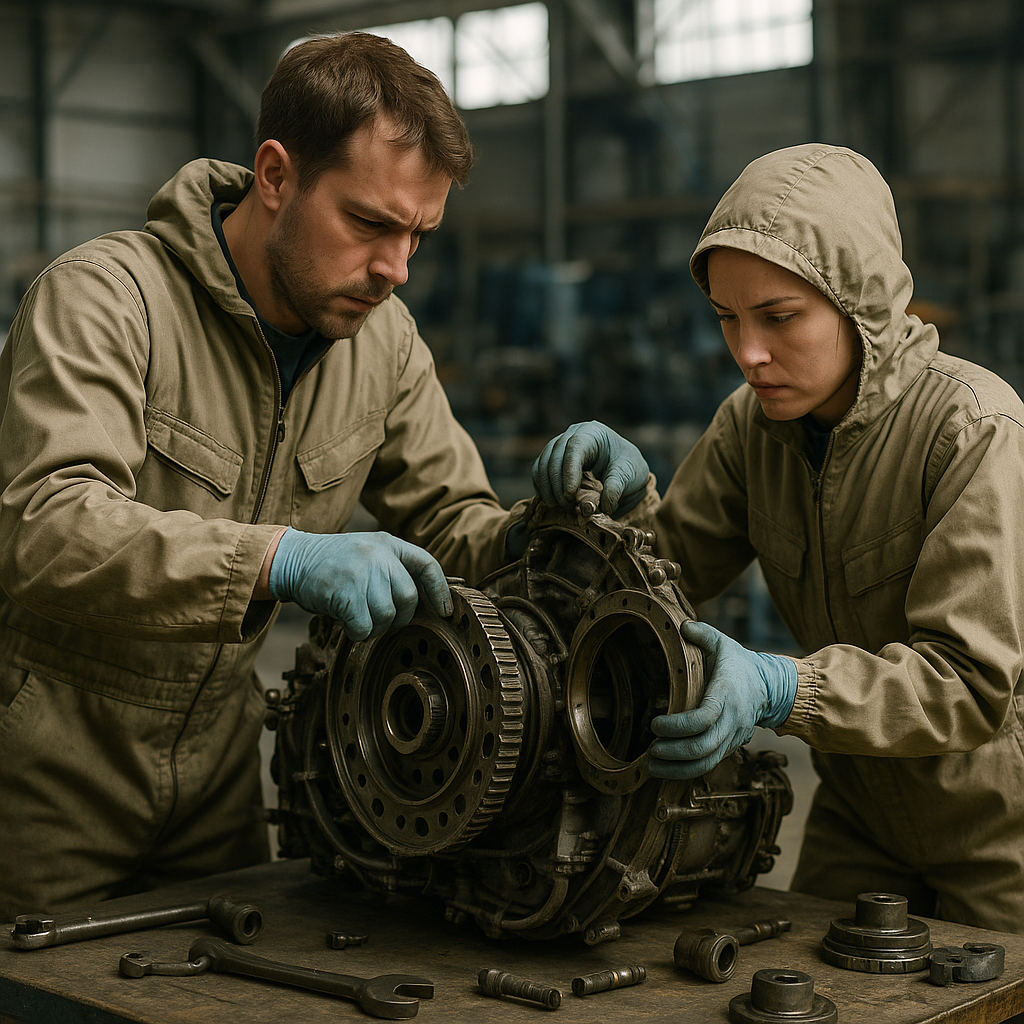
Recycling titanium and superalloys from aircraft engines poses significant challenges that require advanced solutions. These materials are vital to aviation, but reintegrating them into manufacturing is complex.
A major challenge is controlling contamination, especially from oxygen and iron. Aerospace applications demand exceptionally pure materials with impurity levels well below standard industrial requirements. Often, the aerospace industry requires impurity limits to be half or even a quarter of those established by ASTM and other regulatory bodies.
The strict purity standards exist for critical reasons. Even minor contamination can compromise the structural integrity and performance of engine components operating under extreme stress. For titanium parts facing temperatures exceeding 1,300°C, these standards are essential safety measures.
Material sorting is another major challenge. Aircraft engines contain complex assemblies of various titanium alloys and superalloys that must be precisely identified and separated. Without proper sorting, high-grade materials may mix with lower-grade alloys, reducing their recycling potential and economic value.
The fate of recycled materials depends largely on their quality and purity. Scrap contaminated with oxygen or iron is often downcycled into ferrotitanium for steel manufacturing, representing a loss to the aerospace-grade material supply chain.
High-grade recycling requires advanced techniques such as vacuum arc remelting, electron beam melting, and plasma arc melting. These processes effectively reduce contamination but are energy-intensive and demand significant technological investment, typically in combination, to meet aerospace manufacturers’ stringent specifications.
The economic aspect adds further complexity. These advanced recycling methods can be costly, sometimes making virgin material sourcing appear more economical in the short term. However, as raw material costs rise and environmental regulations tighten, the long-term benefits of effective recycling become more evident.
Despite these challenges, the aerospace industry is progressing in recycling titanium and superalloys. Innovations in materials processing technology are improving yields and reducing energy consumption. Some modern facilities now achieve recovery rates of up to 95% for titanium scrap, representing significant advancements in resource efficiency.
The challenges in recycling critical materials also offer opportunities for innovation. Companies developing efficient separation techniques or less energy-intensive refining methods gain competitive advantages in a resource-conscious market. These innovations address environmental concerns and help mitigate supply risks for aerospace materials.
Conclusion: The future of titanium and superalloy recycling in aerospace
Recycling titanium and superalloys from aircraft engines signifies more than just an environmental effort; it has become a strategic necessity for the aerospace industry, given supply chain vulnerabilities and rising raw material costs. The economic benefits are notable—recycled titanium requires four times less energy than producing new, while recycled aluminum uses only 5% of the energy needed for primary production. These recycling programs not only save costs but also ensure a stable supply of critical materials, which could otherwise face shortages due to geopolitical tensions or resource scarcity. Techniques like additive layer manufacturing and closed-loop recycling systems are converting what was once waste into valuable resources that meet the stringent requirements of aerospace manufacturing.
As aerospace technology progresses, the demand for these specialized metals will increase, making effective recycling programs even more critical. The industry’s future relies on establishing sustainable material cycles capable of withstanding market fluctuations and resource constraints. For businesses aiming to optimize their aerospace metal recycling programs while meeting strict industry standards, contact Okon Recycling at 214-717-4083.
